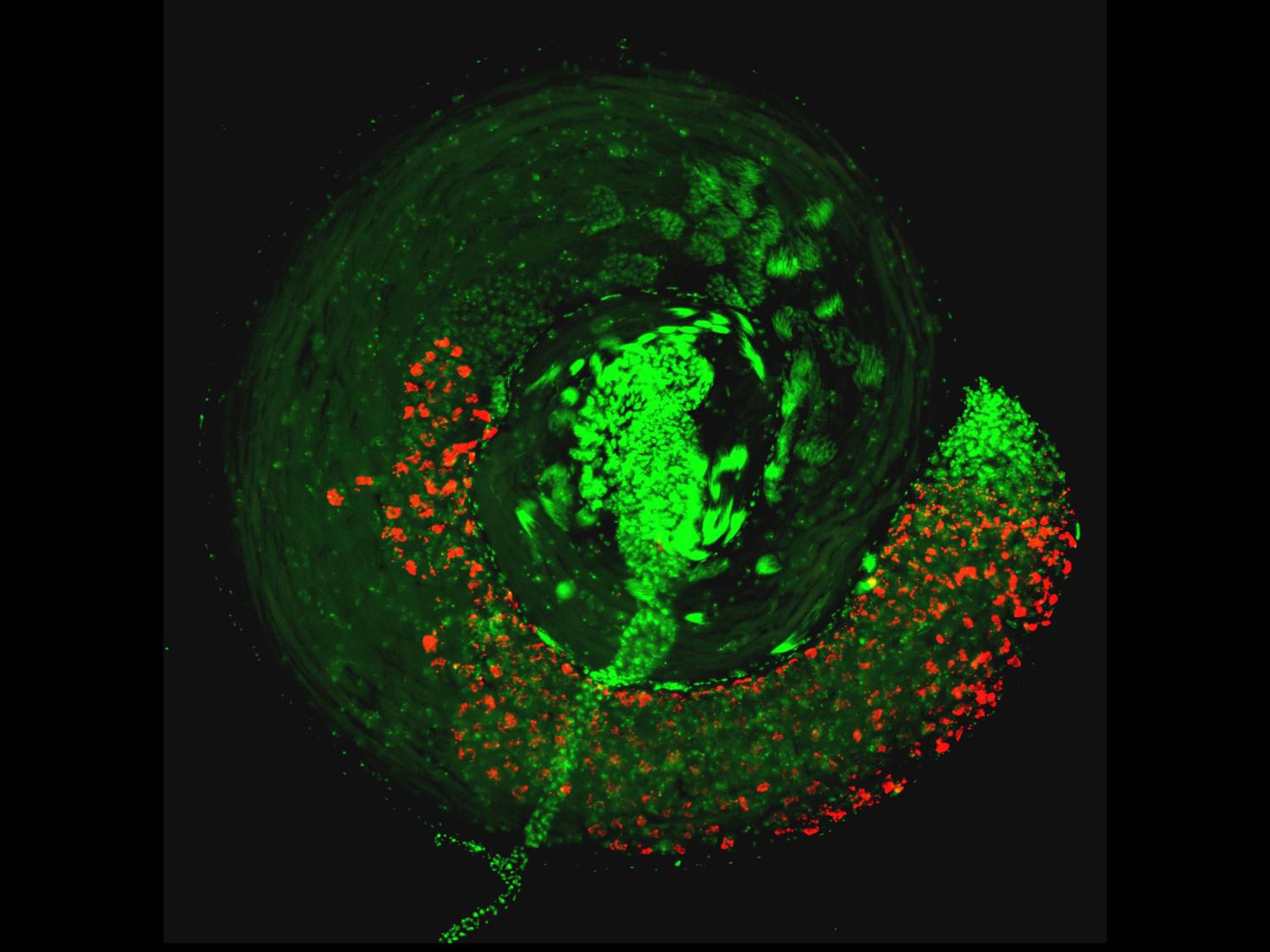2024-03-08 ペンシルベニア州立大学(PennState)
 A new study led by researchers at Penn State has uncovered how a widespread bacteria called Wolbachia and a virus that it carries can cause sterility in male insects by hijacking their sperm messenger molecules — tagged with red fluorescence in this image of Drosophila testes. These findings could improve techniques to control populations of agricultural pests and insects that carry diseases like Zika and dengue to humans. Credit: Rupinder Kaur / Penn State. All Rights Reserved.
A new study led by researchers at Penn State has uncovered how a widespread bacteria called Wolbachia and a virus that it carries can cause sterility in male insects by hijacking their sperm messenger molecules — tagged with red fluorescence in this image of Drosophila testes. These findings could improve techniques to control populations of agricultural pests and insects that carry diseases like Zika and dengue to humans. Credit: Rupinder Kaur / Penn State. All Rights Reserved.
<関連情報>
- https://www.psu.edu/news/eberly-college-science/story/how-does-virus-hijack-insect-sperm-control-disease-vectors-and-pests/
- https://www.science.org/doi/10.1126/science.adk9469
プロファージタンパク質は発育中の精子の非コード長RNAとDNAを変化させ、父性効果による致死を誘導する Prophage proteins alter long noncoding RNA and DNA of developing sperm to induce a paternal-effect lethality
RUPINDER KAUR , ANGELINA MCGARRY , J. DYLAN SHROPSHIRE , BRITTANY A. LEIGH , AND SETH R. BORDENSTEIN
Science Published:7 Mar 2024
DOI:https://doi.org/10.1126/science.adk9469
Editor’s summary
Many arthropods carry symbiotic bacteria. Some, including Wolbachia strains, have the capacity to cause male sterility in a process called cytoplasmic incompatibility, and thereby have influenced the evolutionary trajectory of some insect lineages. One symbiont strain called wMel has been successfully redeployed at scale for mosquito control. Kaur et al. delved into the mechanism that causes cytoplasmic incompatibility, finding that a combination of wMel bacteriophage proteins enter sperm nuclei and act in a cascade of reactions to block embryo development. One protein is an RNase that depletes an insect long noncoding RNA that is required for the transformation of histone to protamine during sperm development. Both proteins can also nick DNA to compromise insect DNA integrity in late spermatids, which ultimately causes unrepairable embryo damage and sterility. —Caroline Ash
Abstract
The extent to which prophage proteins interact with eukaryotic macromolecules is largely unknown. In this work, we show that cytoplasmic incompatibility factor A (CifA) and B (CifB) proteins, encoded by prophage WO of the endosymbiont Wolbachia, alter long noncoding RNA (lncRNA) and DNA during Drosophila sperm development to establish a paternal-effect embryonic lethality known as cytoplasmic incompatibility (CI). CifA is a ribonuclease (RNase) that depletes a spermatocyte lncRNA important for the histone-to-protamine transition of spermiogenesis. Both CifA and CifB are deoxyribonucleases (DNases) that elevate DNA damage in late spermiogenesis. lncRNA knockdown enhances CI, and mutagenesis links lncRNA depletion and subsequent sperm chromatin integrity changes to embryonic DNA damage and CI. Hence, prophage proteins interact with eukaryotic macromolecules during gametogenesis to create a symbiosis that is fundamental to insect evolution and vector control.


